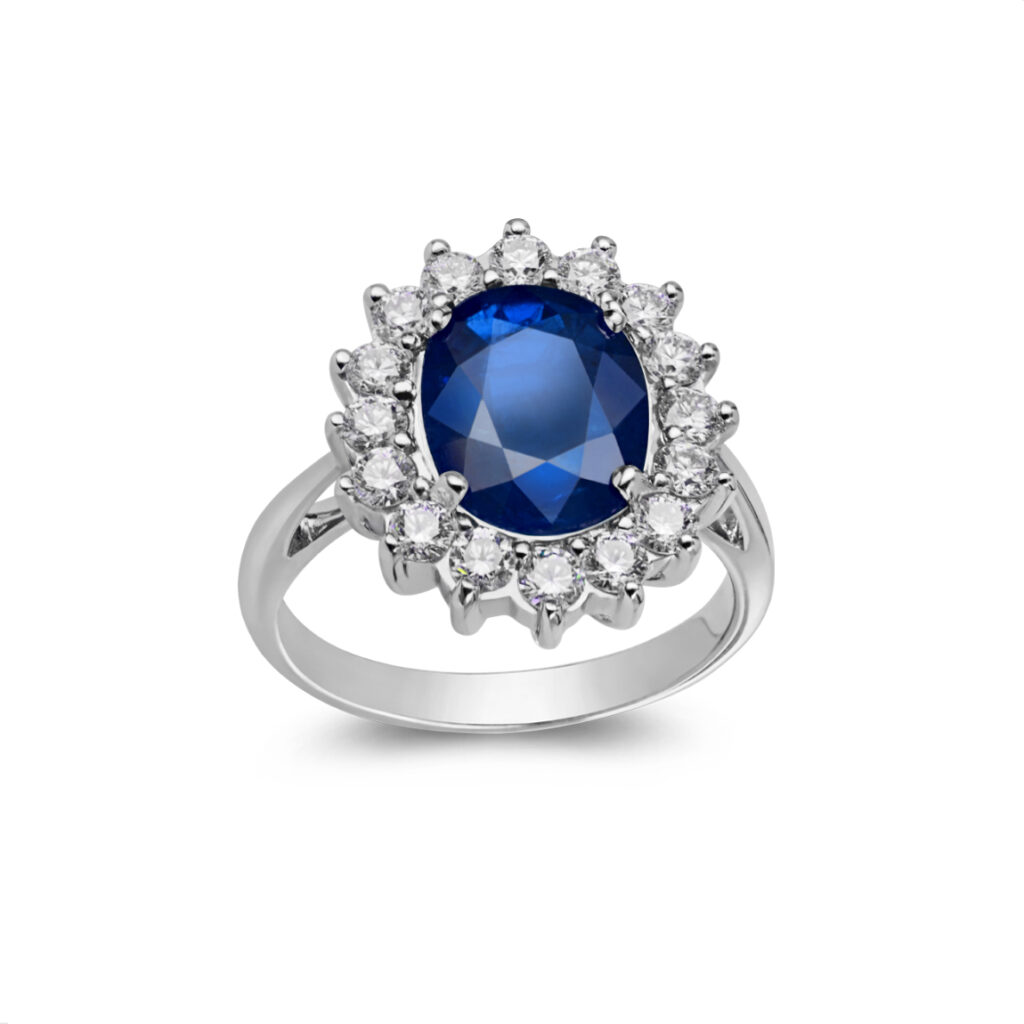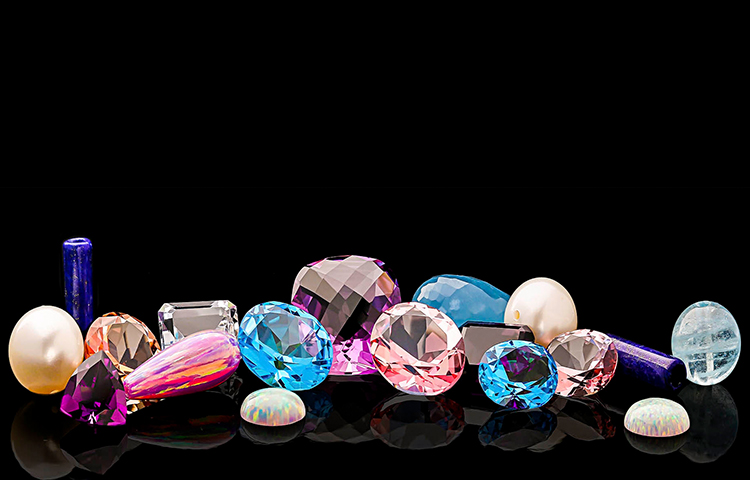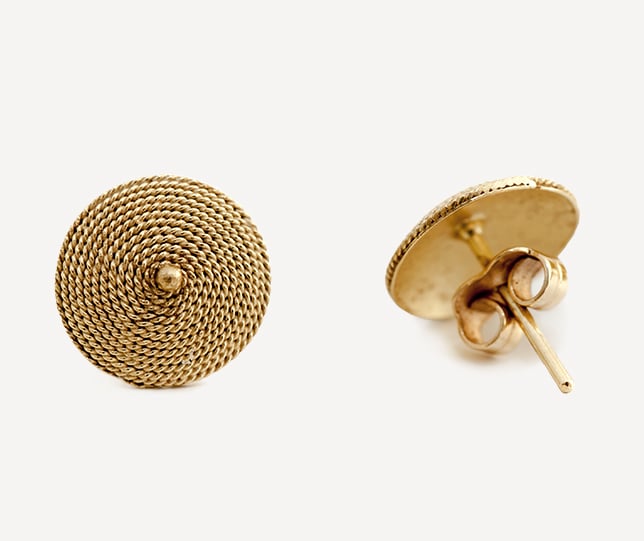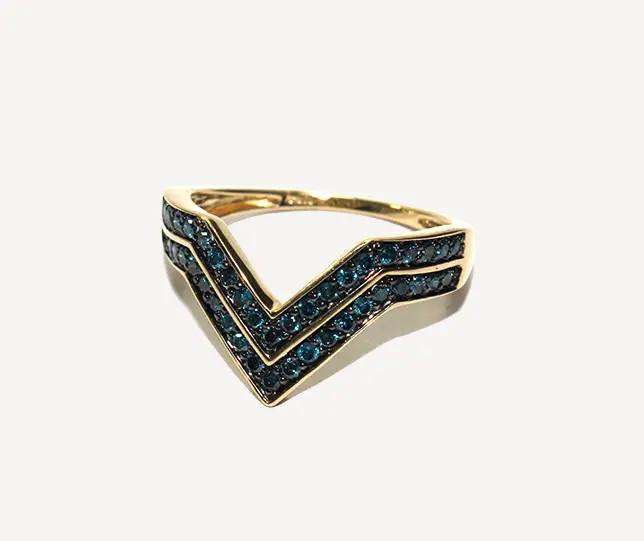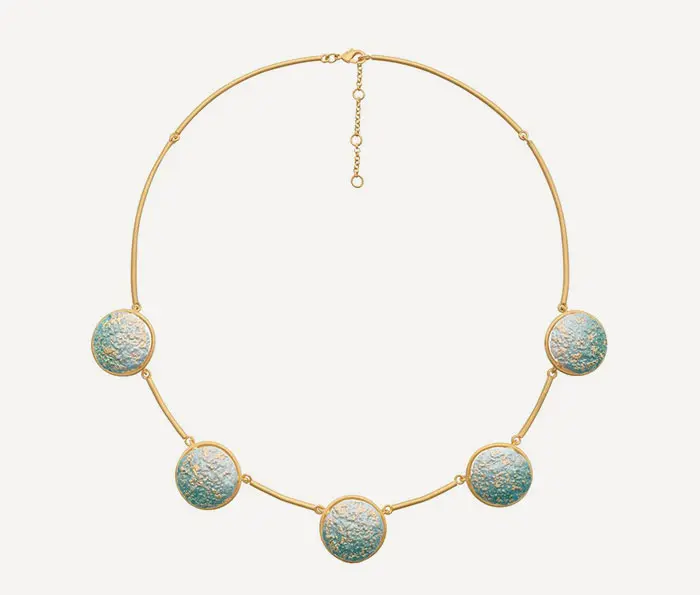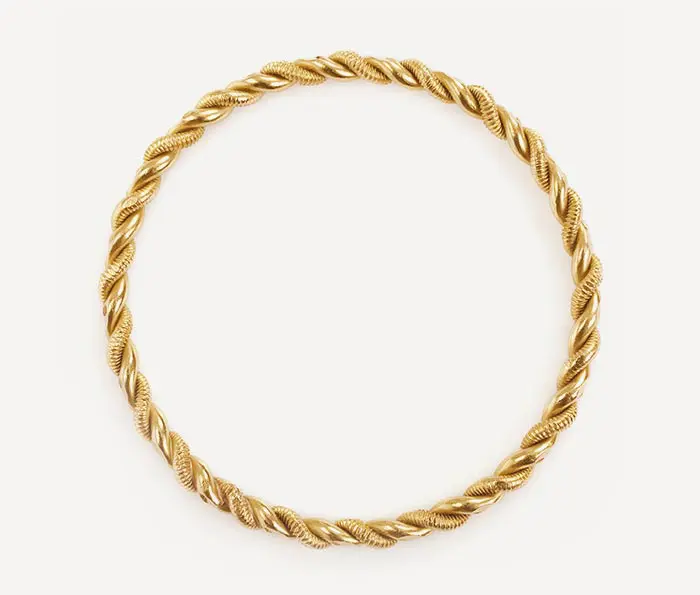The stones that define our history
Giant of the Orient
Cushion cut an impressive corn flower hued internally flawless sapphire with a weight of 466ct. A leading exporter, O.L.M. Macan Marker & Co., purchased the rough sapphire, which weighed more than 600 carats. The Local cutter worked the rough which went undercutting and polishing that transformed it into 466 ct. This was discovered in 1907 In ‘Kalu Gaga ‘(black river) Sri Lanka.
Giant of the Orient was out of the public eye for nearly 100 years.
This stone was sold to an anonymous American private collector in 1907. Gemstone remained quietly under the radar until May 2004, when it unexpectedly appeared in a Christie’s Magnificent Jewels auction catalogue. After Christie’s event which failed to obtain a price for the stone during the auction. Subsequently, Christie received an offer and sold to anonymous British Buyer. As of today, the Blue Giant of Orient is still under private hands and the stone has not been since made public.
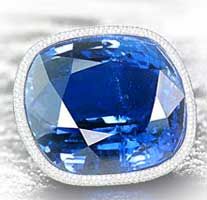
Logan blue sapphire
This internal flawless beauty was found in Sri Lanka. A cushion-cut sapphire weighs 423ct and is the second largest sapphire known. This has a rich deep blue colour and sapphire exhibit with violet overtone. The Logan Sapphire is set in a brooch surrounded by 20 round cut diamonds weighing, in total, 16 cts giving marvellous sparkle to the stone. Sapphire is accompanied by 20 white diamonds giving marvellous sparkles to the stones presently. According to the GIA’s statement in 1997 the Logan sapphire colour purely occurs naturally and there was no evidence of the stone being heat treated. It is currently on display at the National Museum of Natural History in Washington, D.C.
Blue Belle of Asia
High desirable cornflower Blue sapphire with the weight of 400ct is said to be found in a paddy field in Ratnapura Sri Lanka in 1926. It earned the title of the most expensive blue sapphire once it was sold in Christie’s Geneva in November 2014. It’s suspended on a brilliant cut diamond tassel pendant and mounted on a diamond and white gold necklace. The Blue Belle of Asia which untreated cushion cut sapphire from Ceylon has been recut to392.52-carat. Sapphire to the extent of this size, colour and clarity are incredibly rare and rank as one of the most prestigious gemstones to ever become available in the market.
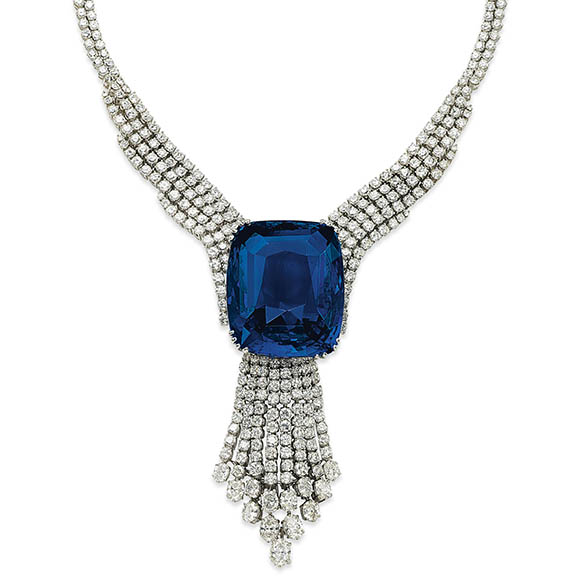
Queen Marie’s Sapphire
The enormous 478.68 carat Sri Lankan blue Sapphire gets its name from the onetime owner of the gemstone Queen Marie of Romania (1875 i938), queen consort of King Ferdinand of Romania (1865 1927). The King purchased the gemstone set as a drop to a Diamond necklace, in 1921 Just one year before his coronation in October 1922, and presented it to Queen Marie, who later wore the splendid necklace which was a perfect match for the exquisitely crafted Sapphire tiara which she wore for the coronation. Queen Marie’s Sapphire is a deep cornflower blue Sapphire of Sri Lankan origin, certified as a natural Sri Lankan Sapphire with no evidence of thermal enhancement. A combination of excellent colour, cut and clarity makes the Queen Marie’s Sapphire one of the most famous Sapphires in the world. The cut of the gemstone is a rectangular step-cut, and the shape is a cushion shape with one end slightly narrower than the other, giving a sort of drop shape to the stone.

Empress Maria’s Sapphire
In the Great London Exhibition of 1862, A Sapphire weighing 260.37 carats was purchased by Russian Emperor Alexander 11 and presented to his wife Empress Maria Alexandrovna. His sapphire was subsequently made as a center price of brooch that also consisted 56 carats of diamond. This rare treasure was described as a unique treasure” for its combination size, color, clarity and extraordinary cut. The colour of the stone is evenly distributed and medium dark saturated blue color. The stone has a dimension of 6cm x 5.3 cm. today this magnificent piece of history is in the Russian Diamond Fund, Where it is proudly shown in Moscow Russia Moscow, Russia. This occupies the 14th largest sapphire in the list of world’s famous sapphires and 9th largest blue sapphire in the world.
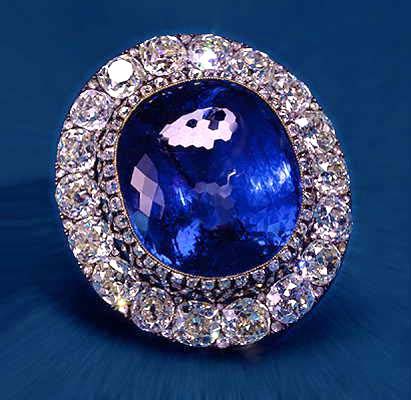
British Royal Jewel
The British Royal Jewel is a 105 carat Chrysoberyl cat’s eye of exceptional quality, discovered in Sri Lanka. It acquired great fame when it was purchased for the British Royalty from a reputed London jeweler around 1900. It is said that this cat’s eye was cherished by four British monarchs: Edward VII, George V, Edward VIII, and Queen Elizabeth II.
The Bismarck Sapphire Necklace
The Bismarck Sapphire Necklace is a Sapphire necklace designed by Cartier, Inc. in 1935 It is named after Countess Mona von Bismarck, who donated the piece to the Smithsonian in 1967. The Sapphire itself was purchased by the Countess in Sri Lanka in 1926, during her honeymoon with Harrison Williams. This stone has the most desirable characteristics such as deep cornflower blue, symmetrically cut, good transparency and perfect clarity. The necklace consists of a single chain of platinum links connected by pairs of round brilliant cut Diamonds. The 98.6carat (19.72g) table-cut Bismarck Sapphire is mounted in a pendant at the front of the necklace, surrounded by baguette-cut Diamonds and eight smaller square-cut Sapphires placed symmetrically around the edges of the setting. Mona von Bismarck donated the stone to the Smithsonian National Museum of Natural History in Washington, D.C. in 1967.
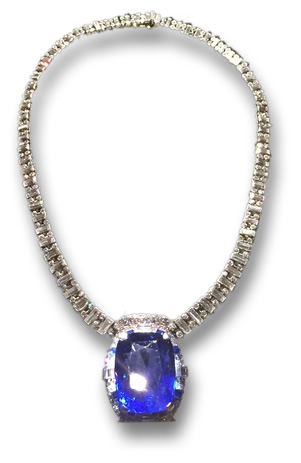
Star of Adam
Star of Adam the largest blue star sapphire found in the world has taken the place of the previous record holder that weighed 1395 carat that also had the origin. This massive sapphire weighing at 1404.49 carat nearly 280 grams is presently held by the anonymous owner. The gem has been certified by the Sri Lanka gemological institute as the largest blue sapphire that they have ever certified and valued at $100 million. The owner believes this can be sold for $175 million at an auction.
This enormous star sapphire is found in Ratnapura district. Stones of this size are extremely rare researchers indicate that this stone could have been found within the granite which can date back to 2 billion years. The stone could have reached 900 Co and over 9000 Atmospheric pressure which cooled over millions of years.
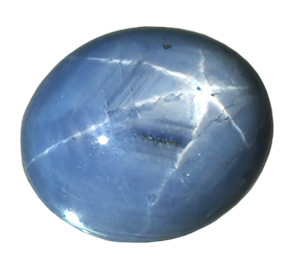
Maharani Cat's Eye
The 58.19 carat honey coloured sharp band of light chrysoberyl cat’s eye discovered in Sri Lanka is one of the finest gems of its kind. This cat’s eye line is due to light reflected off of parallel inclusions of microscopic tubes or crystals of another mineral inside the Chrysoberyl. It is currently displayed in the Smithsonian National Museum of Natural History in Washington, D.C.
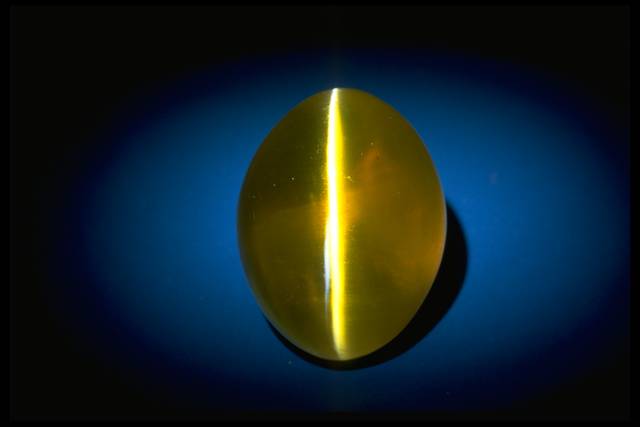
Rosser Reeves Star Ruby
Rosser Reeves Ruby, Weighing 138.7carats (27.74g), is one of the world’s largest and finest star Rubies. This Sri Lankan stone is renowned for its great colour and well-defined star pattern. The stone is named after Advertising mogul Rosser Reeves who pioneered his industry. This stone initially weighed at140 Carats and re-polishing to remove the scratches to become the famous 138 carat Rosser Reeves star Ruby. This star sapphire is an oval cabochon- cut with dome displays very precise Asterism. k. In the year of 1965 Mr. and Mrs. Rosser Reeves donated the star ruby which is now a prized possession displayed at Smithsonian Institution’s National museum of Natural History.
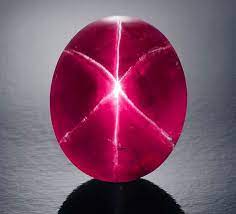
Princess Diana Engagement Ring
This engagement ring consists of 12 Carat oval shaped Royal blue sapphire of Sri Lankan origin surrounded by 14 solitary diamonds set in 18 Karat White gold. This engagement ring was made into the hands of Princess Diana in 1981 when engaged to Prince Charles. During the visit the princess said to have chosen this stone by herself where Prince Charles bought it for simply because she loved it when she first saw it.
The stone is inherited by prince Williams and presently held by Princess Kate Middleton as the engagement ring. It was said the ring was resized to fit her finger as the Princess Kate lost weight.
